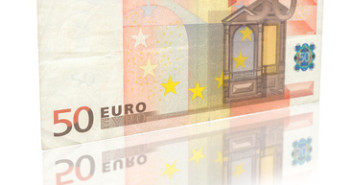EUR/USD has edged lower on Monday, following the release of Eurozone PMIs. The pair is trading in the high-1.35 range in the European session. Spanish Manufacturing PMI dropped below the 50 line, while the Italian and Eurozone Manufacturing PMIs met expectations. In the US, today’s key event is the ISM Manufacturing PMI. As well, Federal Reserve Chairman will deliver remarks in Washington and the markets will be looking for some hints about QE tapering from the Federal Reserve.
Here is a quick update on the technical situation, indicators, and market sentiment that moves euro/dollar.
EUR/USD Technical
- EUR/USD edged higher in the Asian session and crossed above the 1.36 line. The pair is unchanged in the European session.
- Current range: 1.3570 to 1.3650.
Further levels in both directions:Â Â 
- Below: 1.3570, 1.3500, 1.3440, 1.34, 1.3320, 1.3240, 1.3175, 1.31 and 1.3050.
- Above: 1.3650, 1.3710, 1.3800 and 1.3870.
- 1.3570 continues to provide weak support. The round number of 1.3500 is next.
- 1.3650 is the next line of resistance. This is followed by 1.3710.
EUR/USD Fundamentals
- 8:15 Spanish Manufacturing PMI. Exp. 51.3, Actual 48.6 points.
- 8:45 Italian Manufacturing PMI. Exp. 51.4, Actual 5.14 points.
- 9:00 Eurozone Final Manufacturing PMI. Exp. 51.5, Actual 51.6 points.
- 13:30 Fed Chairman Bernard Bernanke Speaks.
- 14:00 US Final Manufacturing PMI. Exp. 54.3 points.
- Sep. Data – US Construction Spending. Estimate 0.5%.
- 15:00 US ISM Manufacturing PMI. Exp. 55.2 points.
- 15:00 US Construction Spending. Exp. 0.4%.
- 15:00 US ISM Manufacturing Prices. Exp. 55 points.
*All times are GMT
For more events and lines, see the Euro to dollar forecast.
EUR/USD Sentiment
- Eurozone PMIs a mixed bag: Spanish Manufacturing PMI dipped to 48.6 points, down from 50.9 last month. This marked the first contraction we’ve seen in the manufacturing sector in six months. There was better news from the Italian and Eurozone Manufacturing PMIs, both of which rose slightly and met expectations. The Italian release came in at 51.4 points, while the Eurozone PMI hit 51.6 points. The euro has responded negatively, dropping below the 1.36 line.
- Eurozone inflation up, unemployment down: There was some good news on Friday, as Eurozone inflation and unemployment figures beat the estimates. Eurozone CPI rose to 0.9%, edging above the estimate of 0.8%. However, inflation is well below the ECB target of 2.0%, so we could see the ECB take monetary action at its policy meeting later this week. The Unemployment Rate dipped to 12.1%, down from 12.2% a month earlier.
- German Retail Sales falters: We continue to see mixed numbers out of Germany, the Eurozone’s largest economy. Retail Sales, the most important consumer spending indicator, dropped 0.8% in October, way off the estimate of 0.5%. The indicator has been struggling, as this was the fourth decline in the past five months. This release comes on the heels of a weak German unemployment claims release on Thursday. On a brighter note, the October Business Climate and Consumer Climate readings were strong, and CPI beat the estimate.
- Markets eye US employment numbers: The markets will be keeping a close eye on this week’s US employment releases, as the Fed is likely to step in and taper QE if employment numbers continue to improve. Unemployment Claims have looked sharp for the past two releases, and if the Non-Farm Payrolls and Unemployment Rate look solid, this week, the US dollar could gain ground against the euro.
- Will ECB again lower rates?: With inflation and growth remaining weak in the Eurozone, the ECB may make a monetary move later this week. It could opt to cut the benchmark rate for a second straight month, or lower the deposit rate, which currently stands at 0.0%. However, a move into negative territory would represent unchartered territory and could have negative consequences for the economy. If the ECB decides to reduce the deposit rate, we could see a “mini cut†of less than 0.25%. The markets are expecting the Bank to hold the current benchmark rate of 0.25%, but just last month the markets were caught by surprise as the ECB cut the rate from 0.50%.



